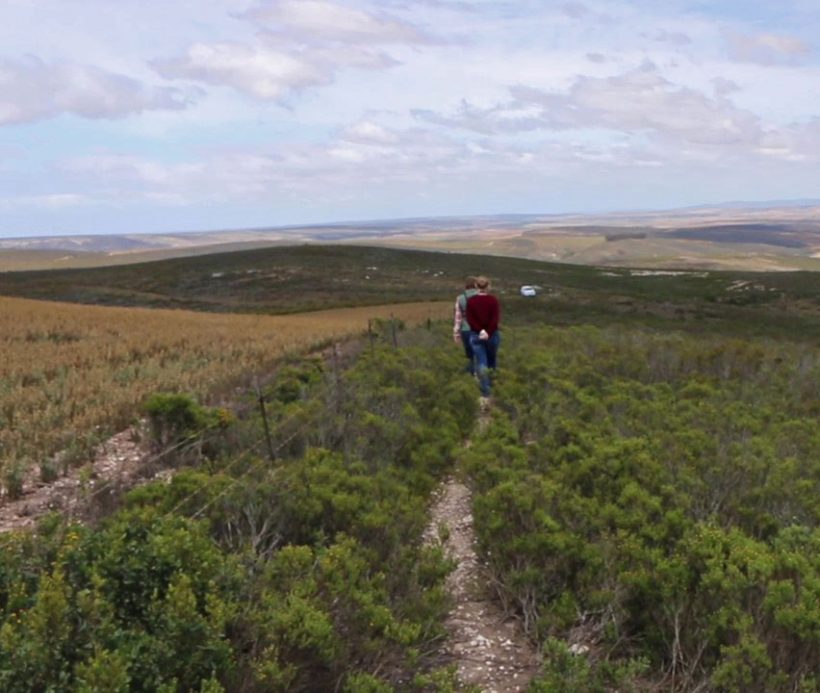Take a hike through some of the most Critically Endangered habitat in South Africa and the world on our interpreted walking trail on Haarwegskloof Renosterveld Reserve.
The trail showcases the unique biodiversity and flora of the quartz patches of the eastern Rûens, home to several species new to science discovered and described by members of the Overberg Renosterveld Conservation Trust.
While these quartz patches have existed for millions of years, they have only recently been recognised for their unique biodiversity and high levels of endemism, with species differing vastly compared to the surrounding vegetation.
The trail starts just above the homestead on the reserve (you can even drive to the starting point) – and offers an easy walk taking about two hours to complete. Be sure to take your camera, to capture not only the expansive views, but also tiny flowers and plants along the route.
Here are some of the special sightings along the way:
- The Critically Endangered Polhillia curtisiae only grows here and on one nearby farm with the total world population of this species being thought to be no more than 100 plants. This species is a member of the Pea Family (Fabaceae) and is pollinated by bees and butterflies.
- The bonsai-like prostrate Aspalathus quartzicola was also only described in 2013. It’s a member of the same genus as the plant used for making rooibos tea. The delicate white flowers (the size of matchstick heads) of this species have a sweet honey-like scent.
- The Endangered Protea decurrens found here and just a handful of other sites has yeast-scented flowers produced at ground level that are pollinated by the Namaqua Rock Mouse.
- The Erica venustiflora subsp. glandulosa is listed as Vulnerable, and is only found in the Bredasdorp area on silcrete/quartz patches in Renosterveld. It flowers between May and August.
- The Acmadenia macropetala is also Vulnerable, and is a member of the Citrus family. It also occurs on the quartz hills from Bredasdorp to Mosselbay, and is pollinated by butterflies and other insects.
Many more of these plants along the walking trail are Red Listed as being threatened with extinction owing to extensive transformation for agriculture of most of this ecosystem. It is therefore a global conservation priority – and the trail offers rare insight into this Critically Endangered habitat, and the largest remaining area of Overberg Renosterveld left in the world.



